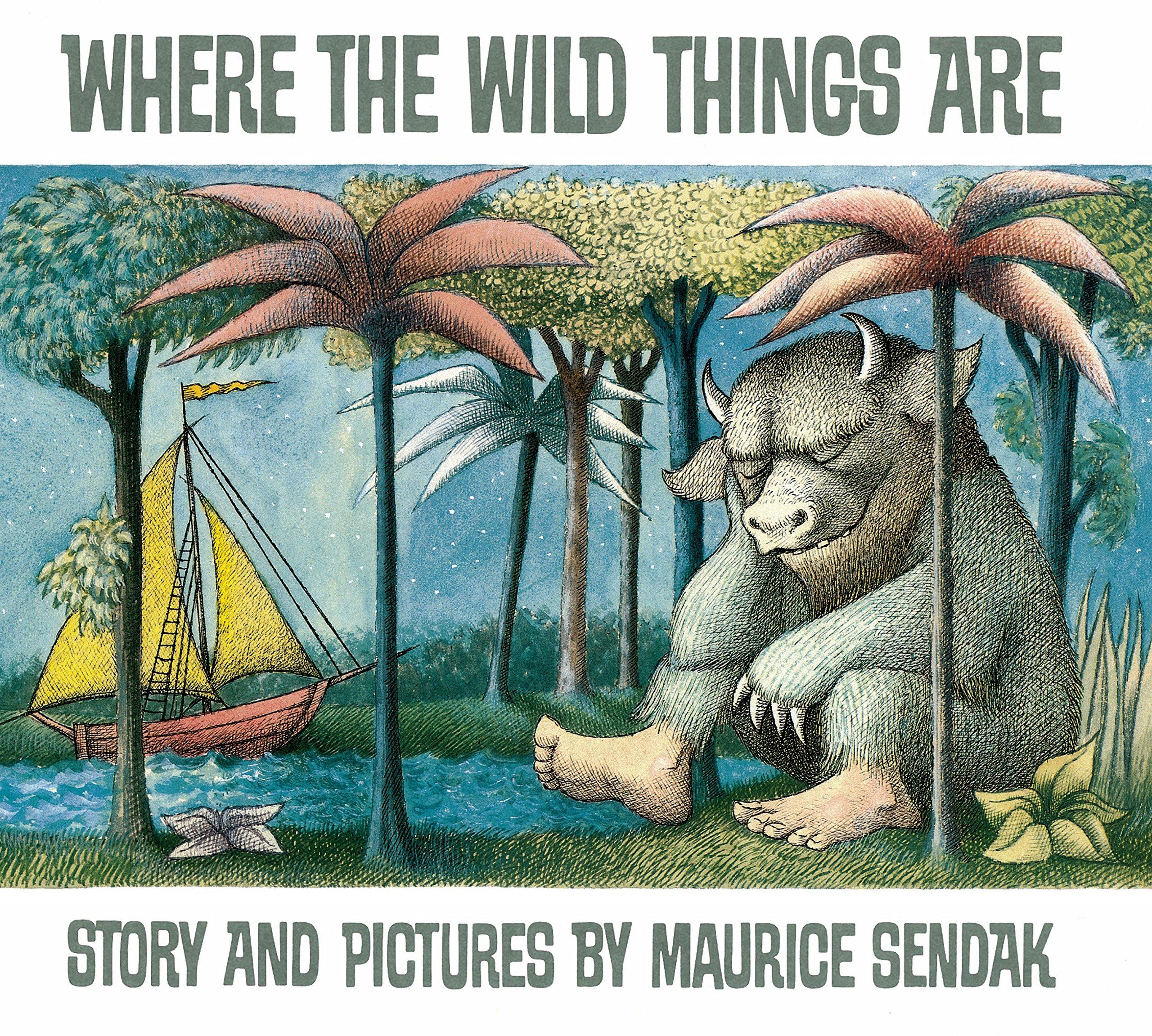
‘An ocean tumbled by with a private boat for Max and he sailed off through night and day and in and out of weeks and almost over a year to where the wild things are.’
You are viewing: Where The Wild Things Are Boat
The moment Maurice Sendak’s wolfish hero escapes the confines of his bedroom prison and into the world, there is a boat waiting for him. A sharp, red sailing boat – appropriately also called Max.
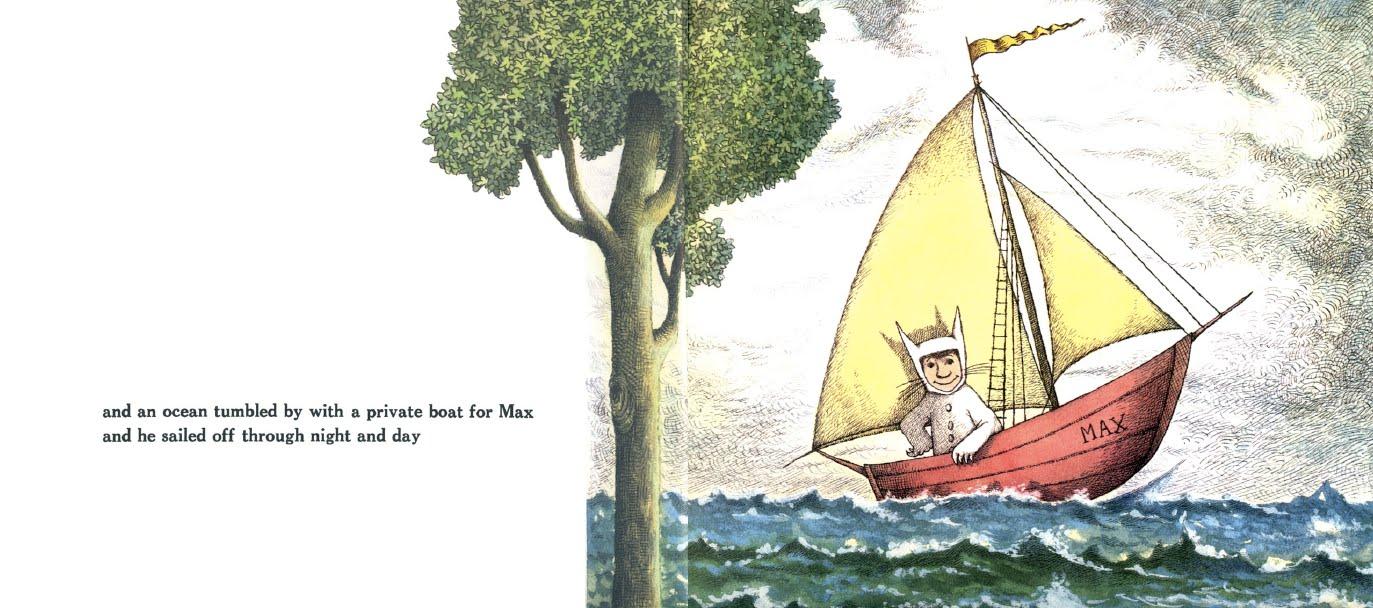
He spends just a few pages of the book in the boat, but Max sails for an entire year – a practically Homeric duration. Sendak declines to fill in the gaps and the reader is left to wonder about the events of his journey.
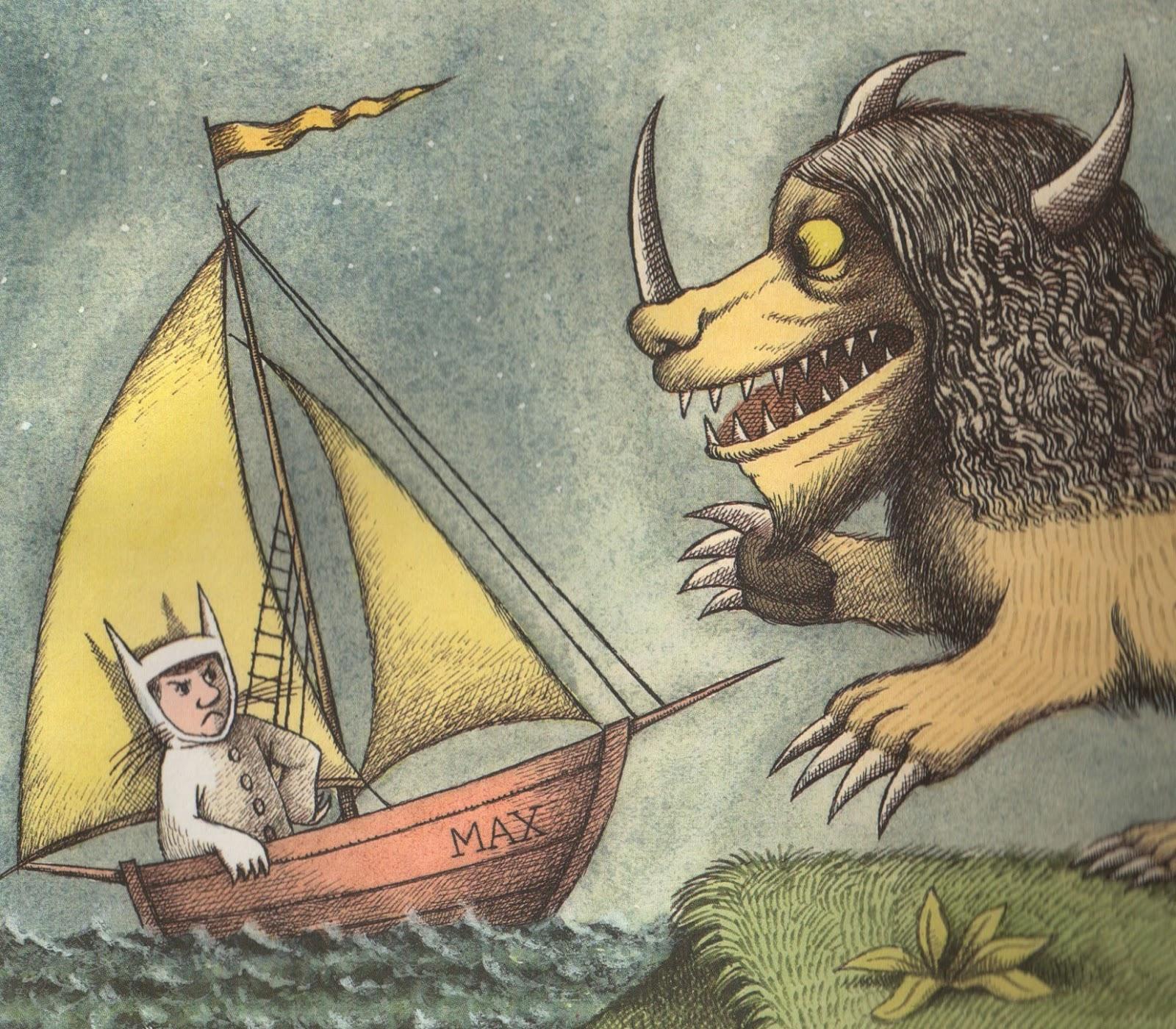
There is something very Odyssean about his departure too. Having tricked the wild things and become their king, he is once again in his boat, cocking a snook at the love hungry monsters. He is Odysseus, in his guise as ‘Nobody’ taunting the wild cyclops Polyphemus.
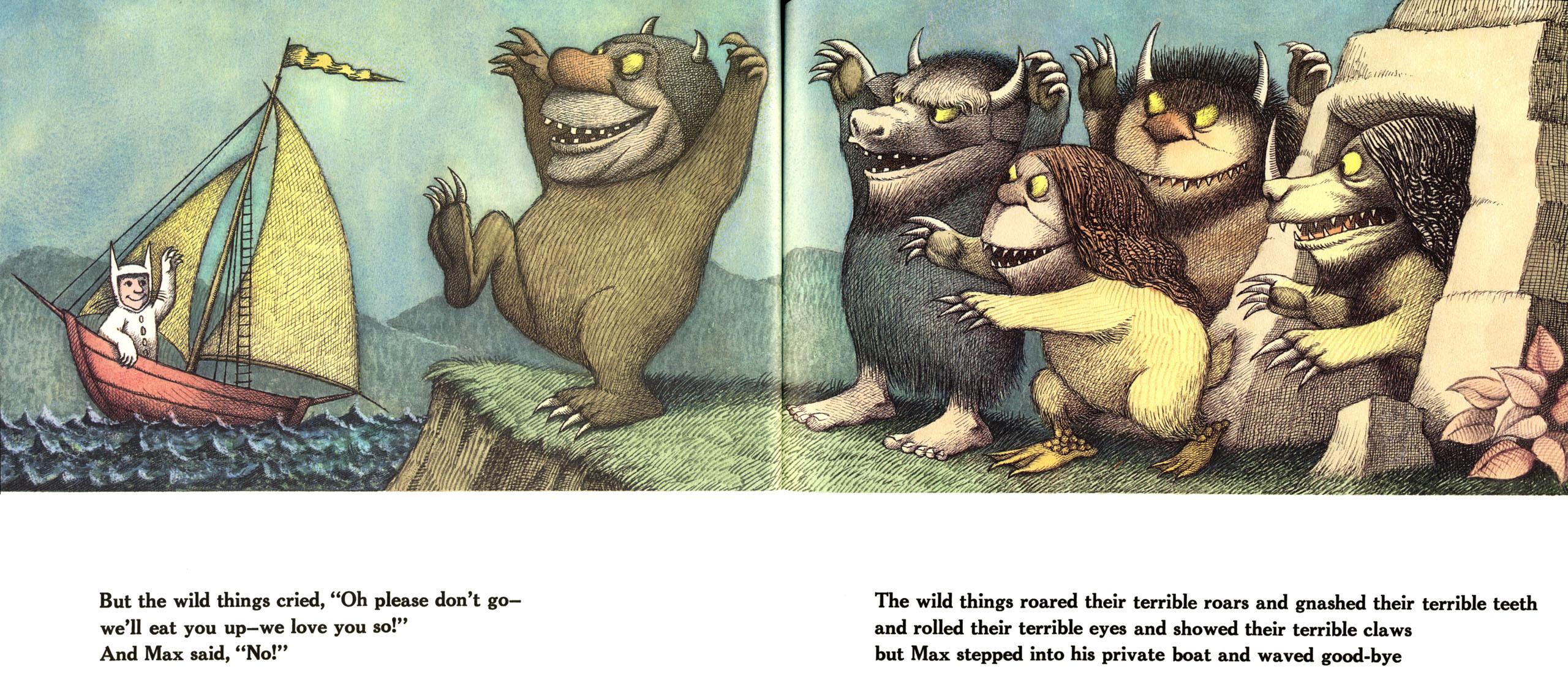
In his fascinating essay, ‘Introduction to Picture Book Codes’, William Moebius explains how Sendak plays with the picture book format in Where the Wild Things Are. When we first get to know Max he is confined not just to his bedroom but inside an internal frame within the book.
That picture slowly grows as the room fills with vegetation. As the final traces of the bedroom are consumed by jungle, the frame vanishes entirely.
His boat then appears, and the imaginary world spreads out over two pages. By the time Max’s boat reaches the island of the Wild Things, the widescreen effect is complete. The fantasy world is given complete domination of the book.
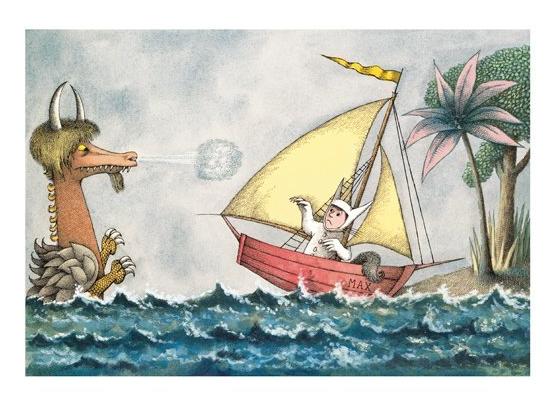
Sendak talked about giving his fantasies a ‘physical form’, around which he built ‘a kind of house around them – the story – and the painting of the house is the picture making’. This use of framing as a fantasy gateway is also used to great effect in C.S. Lewis’s Voyage of the Dawn Treader. In his house there literally hangs a framed painting of a ship at sea, which magically expands to become the ‘real world’, drawing our heroes and the reader in with it. Sendak is more subtle, but just as effective.
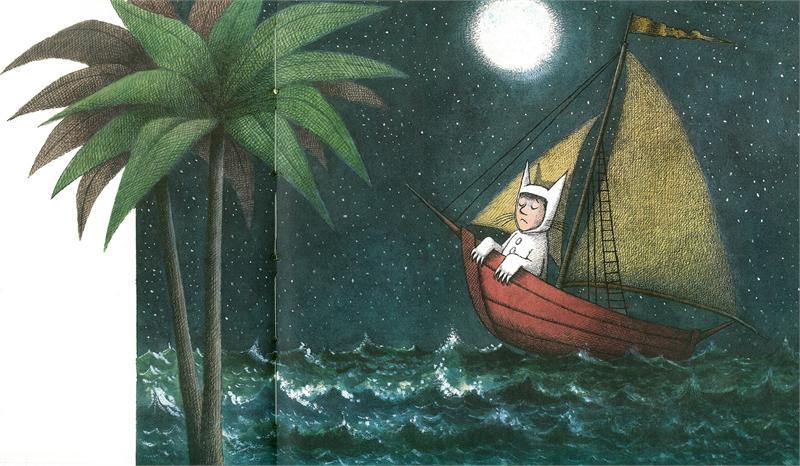
‘Max stepped into his private boat and waved good-bye and sailed back over a year and in and out of weeks and through a day’
The voyage home is one of the best spreads in the book. Max looks a little mournful, perhaps even contrite as his red boat skips over moon lit water. He is given time to stop and think. The luminous seas and sky dazzle and the soft, cross-hatched palms soften. We’re rapidly winding down towards that perfect, sleepy ending.
Where the Wild Things Are is published by Random House
Source: https://t-tees.com
Category: WHERE
